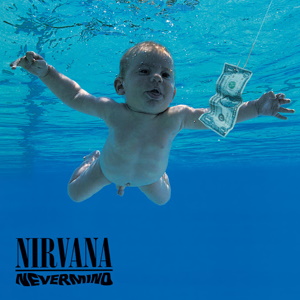After trying to feel out the rock & roll canon both classically & scientifically, I have come up with the rock canon—or at least my version of it—the 100 essential albums of rock & roll's first 50 years. For the record (no pun intended), I'm using Elvis's first single, "That's All Right," as the birth of rock in 1954, which means the list goes up through 2003.
Here are some basic rules I used to guide my list:
Like anything else, the rest ultimately came down to my own judgment. The whole process was obsessive, agonizing, and conflicted—but hey, that's half the fun.
The 1950s.
Here are some basic rules I used to guide my list:
- There is only rock music. Early influences (such as Robert Johnson, Hank Williams, or Billie Holiday) & contemporary influences of other genres (like Miles Davis, Muddy Waters, or Johnny Cash) were all left out.
- I went by the classic titles. As a purist, I included the long-held classics of the genre (such as Elvis Presley's The Sun Sessions & The Beach Boys' Endless Summer) even if they were long out-of-print; in such cases, I included a footnote to a modern substitution that is its closest in-print equivalent.
- I avoided all multi-disc & multi-artist compilations. These are all albums that fit on one compact disc, even when the original vinyl was issued on two. The idea of using multi-artist albums was too much of a slippery slope to venture, despite worthy volumes like soundtrack to The Harder They Come or Saturday Night Fever, or a Phil Spector collection.
- I usually went by the artist over the title. By this rule, I left out some classic albums (Love's Forever Changes & Carole King's Tapestry) to make sure I had room for artists who merited inclusion despite not having an album that was as much as a stone-cold classic (Jerry Lee Lewis & Janis Joplin). In the end, I tried to make a list that met in the middle of the most classic artists & their most classic albums.
- I tried to keep the number of entries per artist balanced. Only The Beatles have 5 albums; Bob Dylan & The Rolling Stones each have 4, & only Elvis & Hendrix have 3. A handful of artists have two albums when each LP is a classic in their own right (i.e., Springsteen's Born To Run and Born In The USA) &/or it was essential to showing the performer's influence (i.e., The Who getting an early greatest hits as well as Who's Next). However, more albums doesn't necessarily mean greater influence; Chuck Berry is lightyears more influential than Radiohead, but Berry's contribution can be summed up by a single album, whereas Radiohead's cannot.
- Finally, artists are represented in the era by which they are most associated—and not necessarily the era in which their albums were released. After each album title is the label upon which it was released followed by the date the album came out. If the album is a compilation that covers several years, the spanning years are written before the release date.
Like anything else, the rest ultimately came down to my own judgment. The whole process was obsessive, agonizing, and conflicted—but hey, that's half the fun.
So here is the canon of rock and roll music—the rock, as it were, upon which rock and roll rests.
The 1950s.
Chuck Berry: The Great Twenty-Eight*
(MCA, 1955-1965/1982)
(MCA, 1955-1965/1982)
"Maybellene,"
"Roll Over Beethoven," "Sweet Little Sixteen," and twenty-five more
reasons why John Lennon wasn't kidding when he said another word for
rock and roll might be Chuck Berry; features "Johnny B. Goode," the
greatest rock record of them all.
Ray Charles: The Best Of The Atlantic Years
(Atlantic, 1951-1959/1994)
(Atlantic, 1951-1959/1994)
 Hear
Brother Ray invent soul music from the best of his Atlantic Records
masters, from the hard rhythm and blues of "I've Got A Woman" through
the secular gospel of "Hallelujah, I Love Her So" and the archetypal
funk of "What'd I Say."
Hear
Brother Ray invent soul music from the best of his Atlantic Records
masters, from the hard rhythm and blues of "I've Got A Woman" through
the secular gospel of "Hallelujah, I Love Her So" and the archetypal
funk of "What'd I Say."Ray Charles: Modern Sounds In Country & Western Music
(ABC, 1962)
Ray Charles' finest studio album shocked everyone by breaking down the walls between soul and country, but hits like "I Can't Stop Loving You" and "You Don't Know Me," explained its smash success—this was pure American pop, through and through.
Buddy Holly: 20 Golden Greats*
(EMI, 1956-1958/1978)
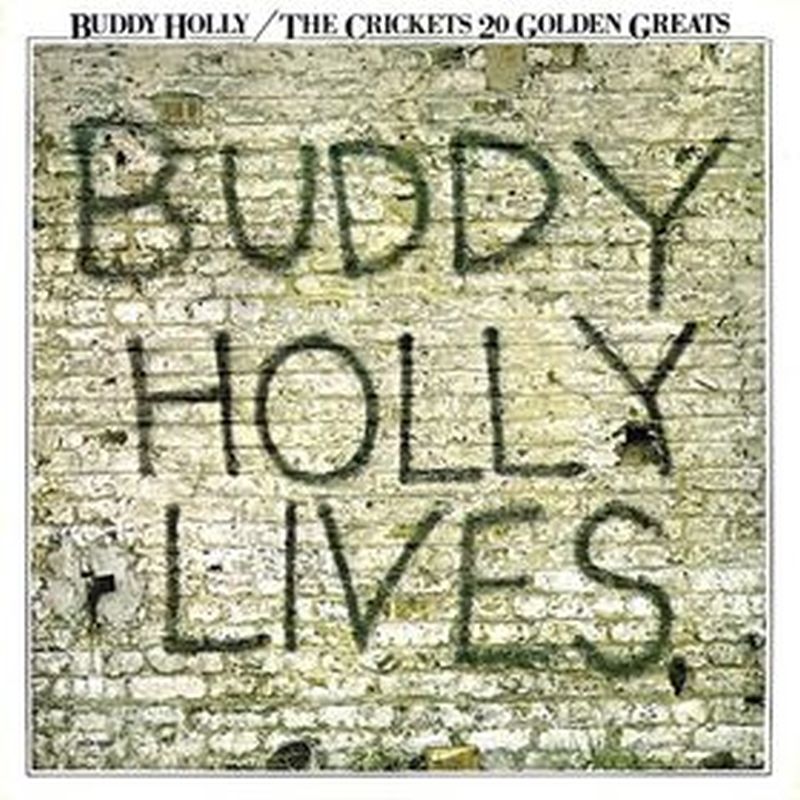 The
first everyman of rock and roll, as well as one of its finest (and
first) singer-songwriters—tunes like "That'll Be The Day," "Not Fade
Away," and "Words Of Love" provided a spring upon which The Beatles,
Dylan, and The Stones could drink from the same well.
The
first everyman of rock and roll, as well as one of its finest (and
first) singer-songwriters—tunes like "That'll Be The Day," "Not Fade
Away," and "Words Of Love" provided a spring upon which The Beatles,
Dylan, and The Stones could drink from the same well.
Jerry Lee Lewis: 18 Original Greatest Hits
(Rhino, 1956-1961/1989)
(Rhino, 1956-1961/1989)

Rock and roll madness in its purist form, as titles on the sleeve "Whole Lotta Shakin' Goin' On," "Great Balls Of Fire," and "Breathless" seemed to tell the whole story, but only hinted at the apocalyptic fury that lay within the grooves inside.
Little Richard: Here's Little Richard*
(Specialty, 1955-1956/1957)
(Specialty, 1955-1956/1957)
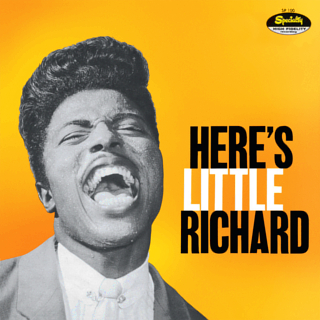 Rock
music's original masterpiece LP, with "Long Tall Sally," "Ready Teddy,"
and "Tutti Frutti," which contained the finest definition of rock and
roll music ever ventured in its closing ten words: "A wop bop a loo bop a
wop bam boom!"
Rock
music's original masterpiece LP, with "Long Tall Sally," "Ready Teddy,"
and "Tutti Frutti," which contained the finest definition of rock and
roll music ever ventured in its closing ten words: "A wop bop a loo bop a
wop bam boom!"
Elvis Presley: The Sun Sessions*
(RCA, 1954-1955/1976)
(RCA, 1954-1955/1976)
A
weird 19-year-old truck-driver named Elvis cuts ten perfect
singles—including "That's All Right," "Good Rockin' Tonight," "Baby,
Let's Play House," and "Mystery Train"—that define rock and roll and
completely change the course of popular music.
Elvis Presley: Elvis Presley
(RCA, 1956)
 From the opening count-off of "Blue Suede Shoes" through to the final cadence of "Money Honey," rock music's first masterpiece, crafted by its first legend; a mix of rock, pop, country, & R&B that was a stone-cold instant classic, down to its iconic (and much-imitated) cover.
From the opening count-off of "Blue Suede Shoes" through to the final cadence of "Money Honey," rock music's first masterpiece, crafted by its first legend; a mix of rock, pop, country, & R&B that was a stone-cold instant classic, down to its iconic (and much-imitated) cover.Elvis Presley: Elvis' Golden Records*
(RCA, 1956-1957/1957)
With "Hound Dog," "Heartbreak Hotel," "Don't Be Cruel," "Love
Me Tender," "All Shook Up," "Jailhouse Rock," "(Let Me Be Your) Teddy
Bear," and the rest, this is the music that made the man King—just
before the Army came and stole his crown.
The 1960s.
The Band: The Band
(Capitol, 1969)
(Capitol, 1969)
The
Great American Novel as a rock and roll album dreamed up by 4 Canadian
nomads and an Arkansas drummer; "Up On Cripple Creek" and "The Night
They Drove Old Dixie Down" are the classics, but it was "Across The
Great Divide" that gave away their hand.
The Beach Boys: Endless Summer**
(Capitol, 1962-1966/1974)
(Capitol, 1962-1966/1974)
California as a state of mind, charted in songs about surfing ("Surfin'
U.S.A."), cars ("I Get Around"), and girls ("California Girls"), and
anchored by brooding songs like "Don't Worry Baby," which looked beyond
the summer to hint at the maturity that was to come.
The Beach Boys: Pet Sounds
(Capitol, 1966)
(Capitol, 1966)
 Rock
and roll's first modern artistic masterpiece, a city upon a hill of
hope ("Wouldn't It Be Nice"), beauty ("God Only Knows"), and ultimately,
loss ("Caroline, No"), which sailed on an ocean of sound so full that
it could float a ship of fools ("Sloop John B"); their finest album.
Rock
and roll's first modern artistic masterpiece, a city upon a hill of
hope ("Wouldn't It Be Nice"), beauty ("God Only Knows"), and ultimately,
loss ("Caroline, No"), which sailed on an ocean of sound so full that
it could float a ship of fools ("Sloop John B"); their finest album.
The Beatles: 1
(Apple, 2000/1962-1970)
(Apple, 2000/1962-1970)
The Beatles: Rubber Soul
(Parlophone, 1965)
(Parlophone, 1965)
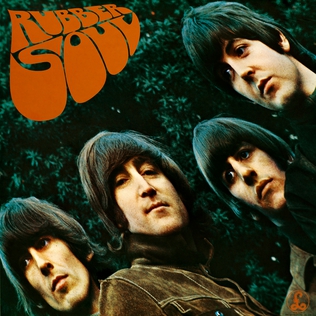 Beatlemania
smokes pot, digs Dylan, and comes up the archetypal modern rock
masterpiece—acoustically mature in some places ("In My Life"),
electrically rocking in others ("Drive My Car"), and cryptically
eclectic all around ("Norwegian Wood (This Bird Has Flown)").
Beatlemania
smokes pot, digs Dylan, and comes up the archetypal modern rock
masterpiece—acoustically mature in some places ("In My Life"),
electrically rocking in others ("Drive My Car"), and cryptically
eclectic all around ("Norwegian Wood (This Bird Has Flown)").
The Beatles: Revolver
(Parlophone, 1966)
(Parlophone, 1966)
 John
finds LSD ("Tomorrow Never Knows"), Paul finds classicism ("Eleanor
Rigby"), George finds meditation ("Love You To"), and Ringo finds a #1
hit ("Yellow Submarine") in their finest album—all parts independent,
yet forming a common whole.
John
finds LSD ("Tomorrow Never Knows"), Paul finds classicism ("Eleanor
Rigby"), George finds meditation ("Love You To"), and Ringo finds a #1
hit ("Yellow Submarine") in their finest album—all parts independent,
yet forming a common whole.
The Beatles: Sgt. Pepper's Lonely Hearts Club Band
(Parlophone, 1967)
(Parlophone, 1967)
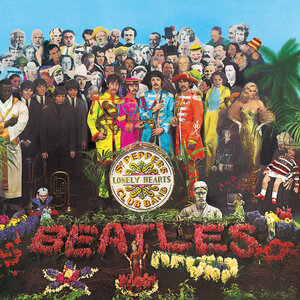 If
not "The Greatest Album Of All-Time," surely the most influential, as
the title track, "Lucy In The Sky With Diamonds," and "A Day In The
Life" charted the course from Rock to Art, and in so doing, divided the
history of the music in two.
If
not "The Greatest Album Of All-Time," surely the most influential, as
the title track, "Lucy In The Sky With Diamonds," and "A Day In The
Life" charted the course from Rock to Art, and in so doing, divided the
history of the music in two.The Beatles: Abbey Road
(Apple, 1970)
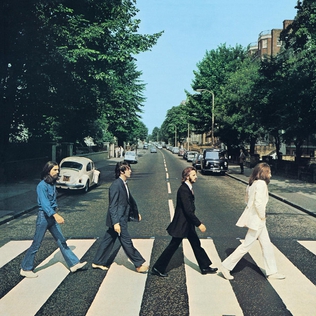 And
in the end, this was their fitting and sophisticated swan-song; but
with "Come Together," "Here Comes The Sun," and Side 2's brilliant "Long
Medley," it was not just a finale—it was their finest-produced and
most-accomplished album.
And
in the end, this was their fitting and sophisticated swan-song; but
with "Come Together," "Here Comes The Sun," and Side 2's brilliant "Long
Medley," it was not just a finale—it was their finest-produced and
most-accomplished album.
James Brown: Live At The Apollo
(King, 1963)
(King, 1963)
.jpg) Rock's
greatest live album and R&B's finest hour is just another night
for the Hardest Working Man In Show Business, as he begs, borrows, and
steals his way through hits like "I'll Go Crazy" and "Think," then fans
the audience's flame on an extended "Lost Someone."
Rock's
greatest live album and R&B's finest hour is just another night
for the Hardest Working Man In Show Business, as he begs, borrows, and
steals his way through hits like "I'll Go Crazy" and "Think," then fans
the audience's flame on an extended "Lost Someone."
James Brown: 20 All-Time Greatest Hits!
(Polydor, 1956-1974/1991)
(Polydor, 1956-1974/1991)
Nothing
less than a history of modern African American music, from hard
R&B ("Please, Please, Please") to fiery soul ("I Got You (I Feel
Good)") to hot funk ("Sex Machine") to proto-rap ("Papa Don't Take No
Mess, Pt. 1"); endlessly sampled, but never equalled.
The Byrds: Greatest Hits
(Columbia, 1965-1967/1967)
(Columbia, 1965-1967/1967)
With
Dylan's words and The Beatles' sound, this was folk-rock,
literally—defined by "Mr. Tambourine Man," "Turn! Turn! Turn!," and
"Chimes of Freedom," before going to acid-rock ("Eight Miles High"),
space-rock ("Mr. Spaceman"), and back ("My Back Pages).
Sam Cooke: The Best Of
(RCA, 1957-1962/1962)
 When
"You Send Me" hit #1, Sam Cooke crossed the divide between gospel titan
and soul pioneer; those who want to dig deeper should opt for Portrait Of A Legend, but with "Chain Gang," "Cupid," & the rest, this the stuff upon which he built his legend.
When
"You Send Me" hit #1, Sam Cooke crossed the divide between gospel titan
and soul pioneer; those who want to dig deeper should opt for Portrait Of A Legend, but with "Chain Gang," "Cupid," & the rest, this the stuff upon which he built his legend.
Cream: Disraeli Gears
(Reaction, 1967)
 11 tracks of Cream on top, just before the pop gave way to the self-indulgence—an acid rock tour of love ("Sunshine Of Your Love"), drugs ("Tales Of Brave Ulysses"), and, um, beer (?) ("Strange Brew"), held up by an old 78 ("Outside Woman Blues").
11 tracks of Cream on top, just before the pop gave way to the self-indulgence—an acid rock tour of love ("Sunshine Of Your Love"), drugs ("Tales Of Brave Ulysses"), and, um, beer (?) ("Strange Brew"), held up by an old 78 ("Outside Woman Blues").
The Doors: The Doors
(Elektra, 1967)
(RCA, 1957-1962/1962)
 When
"You Send Me" hit #1, Sam Cooke crossed the divide between gospel titan
and soul pioneer; those who want to dig deeper should opt for Portrait Of A Legend, but with "Chain Gang," "Cupid," & the rest, this the stuff upon which he built his legend.
When
"You Send Me" hit #1, Sam Cooke crossed the divide between gospel titan
and soul pioneer; those who want to dig deeper should opt for Portrait Of A Legend, but with "Chain Gang," "Cupid," & the rest, this the stuff upon which he built his legend.Cream: Disraeli Gears
(Reaction, 1967)
 11 tracks of Cream on top, just before the pop gave way to the self-indulgence—an acid rock tour of love ("Sunshine Of Your Love"), drugs ("Tales Of Brave Ulysses"), and, um, beer (?) ("Strange Brew"), held up by an old 78 ("Outside Woman Blues").
11 tracks of Cream on top, just before the pop gave way to the self-indulgence—an acid rock tour of love ("Sunshine Of Your Love"), drugs ("Tales Of Brave Ulysses"), and, um, beer (?) ("Strange Brew"), held up by an old 78 ("Outside Woman Blues").The Doors: The Doors
(Elektra, 1967)
 Beginning
with "Break On Through," climaxing on "Light My Fire," and closing with
"The End," the archetypal statement of sex, drugs, and rock and
roll—or, the brooding darkness hidden just under psychedelic rock's
diamond sky that set the stage for the rest of the decade.
Beginning
with "Break On Through," climaxing on "Light My Fire," and closing with
"The End," the archetypal statement of sex, drugs, and rock and
roll—or, the brooding darkness hidden just under psychedelic rock's
diamond sky that set the stage for the rest of the decade.
Bob Dylan: Bringing It All Back Home
(Columbia, 1965)
(Columbia, 1965)
Bob
Dylan plugs in and all but invents modern rock and roll—as abstract
lyrics meet a garage rock hurricane on "Subterranean Homesick Blues" and
"Maggie's Farm," before the sound and fury subside for an acoustic side
crowned by "Mr. Tambourine Man."
Bob Dylan: Highway 61 Revisited
(Columbia, 1965)
(Columbia, 1965)
Bob Dylan: Blonde On Blonde
(Columbia, 1966)
(Columbia, 1966)
The
capstone to Dylan's initial rock trilogy is an extended meditation on
love ("I Want You"), drugs ("Rainy Day Women #12 & 35"), and
poetry ("Visions Of Johanna"), with glimpses of death and humor wrapped
in what he famously dubbed "that wild, mercury sound."
Bob Dylan: Blood On The Tracks
(Columbia, 1975)
(Columbia, 1975)
With
his marriage in shambles, Dylan shuffled this album together from
half-electric ("Tangled Up In Blue," "Idiot Wind") and half-acoustic ("A
Simple Twist Of Fate," "Shelter From The Storm") stunners that stand as
his finest work since the 1960s.
Aretha Franklin: I Never Loved A Man The Way I Loved You
(Atlantic, 1967)
(Atlantic, 1967)
The
fervor of the church meets the fire of the bedroom on songs like
"Respect," "Drown In My Own Tears," "Do Right Woman, Do Right Man," and
the title track, which double as Aretha's arrival as an R&B
powerhouse and what many consider the greatest soul album ever made.
Aretha Franklin: Lady Soul
(Atlantic, 1968)
(Atlantic, 1968)
The
Queen Of Soul begins her reign on this second masterpiece, with the
definitive readings of "Chain Of Fools" and "(You Make Me Feel Like) A
Natural Woman," released just before her career lost focus in a sea of
overwrought performances and scattershot material.
Marvin Gaye: What's Going On
(Tamla, 1971)
 Rock
and roll as a sermon in soul music's first (and finest) concept album,
with Gaye's eyes focused on heaven but soul weary as hell; propelled by
hits like the title track and "Mercy Mercy Me," and "Inner City Blues,"
it would become Motown's best-selling album ever.
Rock
and roll as a sermon in soul music's first (and finest) concept album,
with Gaye's eyes focused on heaven but soul weary as hell; propelled by
hits like the title track and "Mercy Mercy Me," and "Inner City Blues,"
it would become Motown's best-selling album ever.
Jimi Hendrix: Are You Experienced
(Reprise, 1967)
(Reprise, 1967)
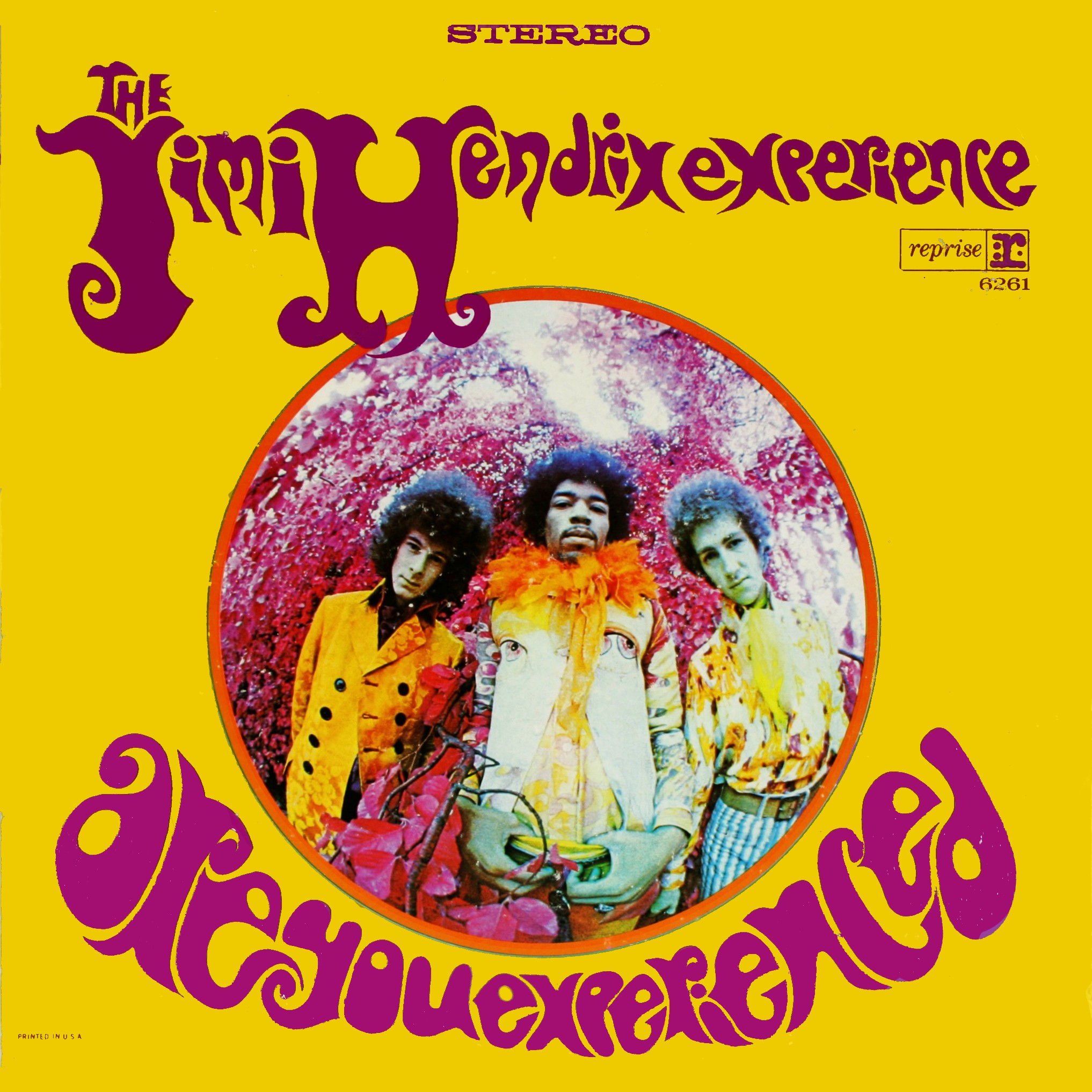 Rock's
greatest guitarist makes rock's greatest debut album of all-time, which
sounds like an avalanche and feels like a greatest hits; on "Purple
Rain," "Hey Joe," "The Wind Cries Mary," "Foxy Lady," and the rest, this
was a rare album that simply changed everything.
Rock's
greatest guitarist makes rock's greatest debut album of all-time, which
sounds like an avalanche and feels like a greatest hits; on "Purple
Rain," "Hey Joe," "The Wind Cries Mary," "Foxy Lady," and the rest, this
was a rare album that simply changed everything.
Jimi Hendrix: Axis/Bold As Love
(Reprise, 1967)
(Reprise, 1967)
An
underrated "sophomore slump" that most bands would kill to have be
their finest album, Hendrix digs in and deepens the textures—both
musically and lyrically—on "Spanish Castle Magic," "Little Wing,"
"Castles Made Of Sand," and the staggering "If 6 was 9."
Jimi Hendrix: Electric Ladyland
(Reprise, 1968)
(Reprise, 1968)
 For
the first and only time in his all-too-brief career, Hendrix received
unlimited studio time and came up with this, a 2-LP exploration of love,
rock, and sci-fi, which peaked with "All Along The Watchtower," the
greatest Dylan cover ever—and somehow, Hendrix's only US Top 20 hit.
For
the first and only time in his all-too-brief career, Hendrix received
unlimited studio time and came up with this, a 2-LP exploration of love,
rock, and sci-fi, which peaked with "All Along The Watchtower," the
greatest Dylan cover ever—and somehow, Hendrix's only US Top 20 hit.
Janis Joplin: Greatest Hits
(Columbia, 1966-1971/1973)
 Rock's
greatest white female singer dressed like a hippie and shouted like a
rocker, but remained a blues singer down to her tortured soul; with
"Piece Of My Heart" and "Me And Bobbie McGee," this is all-thrills,
no-frills overview is still the collection to beat.
Rock's
greatest white female singer dressed like a hippie and shouted like a
rocker, but remained a blues singer down to her tortured soul; with
"Piece Of My Heart" and "Me And Bobbie McGee," this is all-thrills,
no-frills overview is still the collection to beat.
Otis Redding: Otis Blue: Otis Redding Sings Soul
(Columbia, 1966-1971/1973)
 Rock's
greatest white female singer dressed like a hippie and shouted like a
rocker, but remained a blues singer down to her tortured soul; with
"Piece Of My Heart" and "Me And Bobbie McGee," this is all-thrills,
no-frills overview is still the collection to beat.
Rock's
greatest white female singer dressed like a hippie and shouted like a
rocker, but remained a blues singer down to her tortured soul; with
"Piece Of My Heart" and "Me And Bobbie McGee," this is all-thrills,
no-frills overview is still the collection to beat.Otis Redding: Otis Blue: Otis Redding Sings Soul
(Atco, 1965)
 The
King Of Soul's finest hour, as he reinterprets old hits ("A Change Is
Gonna Come"), sets up new ones ("Respect"), takes on the rockers at
their own game ("Satisfaction"), and ruminates on love and loss as only
he can ("I've Been Loving You Too Long").
The
King Of Soul's finest hour, as he reinterprets old hits ("A Change Is
Gonna Come"), sets up new ones ("Respect"), takes on the rockers at
their own game ("Satisfaction"), and ruminates on love and loss as only
he can ("I've Been Loving You Too Long").
The Rolling Stones: Big Hits (High Tide & Green Grass)
(London, 1964-1966/1966)
(London, 1964-1966/1966)
The Rolling Stones don't so much arrive in pop culture as they do assault it, blasting consumerism ("Get Off Of My Cloud"), sex ("Heart Of Stone"), class ("Play With Fire"), and, on their signature "(I Can't Get No) Satisfaction," all of the above.
The Rolling Stones: Beggars Banquet
(London, 1968)
(London, 1968)
 With "Sympathy For The Devil" leading the way, The Stones enter their "Greatest Rock And Roll Band In The World" phase with the sound to prove it—part blues, part country, and, on "Street Fighting Man," all revolutionary.
With "Sympathy For The Devil" leading the way, The Stones enter their "Greatest Rock And Roll Band In The World" phase with the sound to prove it—part blues, part country, and, on "Street Fighting Man," all revolutionary.
The Rolling Stones: Let It Bleed
(London, 1969)
(London, 1969)
 An
Irish wake for the 1960s, released just on the cusp of their collapse
by the band who would put the final nail on the coffin—the apocalyptic
"Gimme Shelter" told the whole story, but "You Can't Always Get What You
Want" kept you coming back for more.
An
Irish wake for the 1960s, released just on the cusp of their collapse
by the band who would put the final nail on the coffin—the apocalyptic
"Gimme Shelter" told the whole story, but "You Can't Always Get What You
Want" kept you coming back for more.
The Rolling Stones: Exile On Main Street
(Rolling Stones, 1972)
(Rolling Stones, 1972)
A
murky, messy sprawl of an album, with no real relent, just hard, thick
rock; "Tumbling Dice" was the closest thing to a hit single, while
"Rocks Off" and "Down The Line" played like the equivalent of drowning
in a mud pit—is it any wonder that this is their finest album?
Diana Ross & The Supremes: The Definitive Collection
(Motown, 1963-1969/2008)
(Motown, 1963-1969/2008)
 The
Motown Sound in its Platonian form, best heard in 12 #1 songs—including
"Where Did Our Love Go," "Baby Love," "Stop! In The Name Of Love," "You
Can't Hurry Love," "Love Child," and a few that have nothing to do with
love—still a record for an American vocal group.
The
Motown Sound in its Platonian form, best heard in 12 #1 songs—including
"Where Did Our Love Go," "Baby Love," "Stop! In The Name Of Love," "You
Can't Hurry Love," "Love Child," and a few that have nothing to do with
love—still a record for an American vocal group.
Simon & Garfunkel: Bridge Over Troubled Water
Columbia, 1970)
Columbia, 1970)
The
calm in the storm of '60s rock as captured on their definitive album,
released just as the 1960s—and the duo itself—was dissolving altogether;
with soon-to-be-standards like "The Boxer," "Cecilia," and the title
track, this was a perfect ending for both.
Sly & The Family Stone: Greatest Hits
(Columbia, 1967-1969/1970)
(Columbia, 1967-1969/1970)
A
'60s utopia where race, sex, and class knew no boundaries and made
music to match, as hits like "Dance To The Music" and "Everyday People"
blended rock, pop, soul, and funk; in other words, a Great Society that
actually worked, hidden in state-of-the-art acid rock.
Sly & The Family Stone: There's A Riot Goin' On!
(Columbia, 1971)
The title answered Marvin Gaye's What's Going On while the music took the Great Society of Sly's '60s work and burnt it down; with songs like "Thank You For Talkin' To Me Africa," it was a dark, challenging LP, though "Family Affair" was still funky enough to hit #1.
The Velvet Underground & Nico
(Verve, 1967)
Overlooked at the time and indispensable ever since, Lou Reed & Co. crawled into rock and roll's seething id of hard drugs ("Heroin"), hard sex ("Venus In Furs"), and hard noise ("European Son"), inventing postmodern rock and roll and setting the stage for punk.
(Columbia, 1971)
The title answered Marvin Gaye's What's Going On while the music took the Great Society of Sly's '60s work and burnt it down; with songs like "Thank You For Talkin' To Me Africa," it was a dark, challenging LP, though "Family Affair" was still funky enough to hit #1.
The Velvet Underground & Nico
(Verve, 1967)
Overlooked at the time and indispensable ever since, Lou Reed & Co. crawled into rock and roll's seething id of hard drugs ("Heroin"), hard sex ("Venus In Furs"), and hard noise ("European Son"), inventing postmodern rock and roll and setting the stage for punk.
The Who: Meaty Beaty Big & Bouncy**
(Track, 1965-1970/1971)
(Track, 1965-1970/1971)
They
called it "Maximum R&B," but in early hits like "My
Generation," "The Kids Are Alright," "Substitute," and the acid-inspired
"I Can See For Miles," this was cutting-edge pop music, lovingly
wrapped in a tempest of the hardest rock and roll of its time.
The Who: Who's Next
(Track, 1971)
(Track, 1971)
The group turns up the cynicism, throws in synthesizers, and reinvents themselves as arena rockers—God
knows they were already loud enough, but with "Baba O'Riley" and "Won't
Get Fooled Again," they had songs as huge as their venues; their finest
album.
The 1970s.
Aerosmith: Rocks
(Columbia, 1976)
(Columbia, 1976)
They
would have bigger and more popular albums, but in tracks like "Last
Child" and "Back In the Saddle," they would never have better; this is
point at which Aerosmith could look back and call themselves "America's
Greatest Rock And Roll Band" with a straight face.
The Allman Brothers Band: At Fillmore East
(Capricorn, 1971)
 The biggest American band of their day shows off their musical prowess in this double-LP with equal parts hits ("Statesboro Blues") and jams ("Whipping Post"), built around Duane's electric slide and Gregg's rough-hewn vocals, all captured live and raw, just before the fall.
The biggest American band of their day shows off their musical prowess in this double-LP with equal parts hits ("Statesboro Blues") and jams ("Whipping Post"), built around Duane's electric slide and Gregg's rough-hewn vocals, all captured live and raw, just before the fall.Black Sabbath: Paranoid
(Vertigo, 1970)
The definitive album from the definitive heavy metal band, with enormous riffs fueling angst-filled classics like "Iron Man," "War Pigs," and the title track, all spit with venom by Ozzy Osbourne, decades before he became a pop-culture punchline.
David Bowie: Hunky Dory
(RCA, 1971)
 Bowie's
first masterpiece, with a hit ("Changes"), an epic ("Life On Mars?"), & 3 killings of the father ("Andy Warhol," "Song to Bob Dylan, and
the Reed-inspired "Queen Bitch"), before returning to the strangeness
("The Bewlay Brothers") from which it had come.
Bowie's
first masterpiece, with a hit ("Changes"), an epic ("Life On Mars?"), & 3 killings of the father ("Andy Warhol," "Song to Bob Dylan, and
the Reed-inspired "Queen Bitch"), before returning to the strangeness
("The Bewlay Brothers") from which it had come.David Bowie: The Rise & Fall Of Ziggy Stardust & The Spiders From Mars
(RCA, 1972)
Rock
and roll as a passion play about an alien named "Ziggy Stardust" who
has "Five Years" to become the world's biggest "Star," until committing a
"Rock And Roll Suicide"; if Bowie couldn't quite live it out in real
life, you'd never know it from the music.
The Clash: London Calling
(CBS, 1979)
(CBS, 1979)
The
Only Band That Mattered ventures out from punk rock into an apocalyptic
rock wasteland of the title track, and remake the music in their own
image with rockabilly ("Brand New Cadillac"), reggae ("Rudie Can't
Fail"), and a surprise pop hit ("Train In Vain").
Derek & The Dominos: Layla & Other Assorted Love Songs
(Atco, 1970)
Eric Clapton's finest hour, his guitar work energized by bandmate Duane Allman's slide ("Bell Bottom Blues") and his performances wracked by the agony of being in love with his best friend's wife ("Layla"); it was too raw to last, but the best rock usually is.
The Eagles: Hotel California
(Asylum, 1976)
A
bicentennial portrait of America from the other side of western
expansionism, centered around the title track's gilded palace of sin;
"They call it paradise, I don't know why," the singer warns in the
closer, "The Last Resort," "You call some place paradise, kiss it
goodbye."
Fleetwood Mac: Rumours
(Warner Brothers, 1977)
(Warner Brothers, 1977)
 A
perfect '70s pop band whose relationships were falling apart craft a
perfect '70s pop album about relationships falling apart—powered by hits
like "Dreams," "Don't Stop," and "The Chain," it was the best-selling
album of all time until Thriller came along.
A
perfect '70s pop band whose relationships were falling apart craft a
perfect '70s pop album about relationships falling apart—powered by hits
like "Dreams," "Don't Stop," and "The Chain," it was the best-selling
album of all time until Thriller came along.
Al Green: Greatest Hits
(Hi, 1971-1973/1975)
(Hi, 1971-1973/1975)
Following
in the footsteps of Cooke and Redding, Green was the top soul singer of
his time, as he crooned and pled his way through "Tired Of Being
Alone," "Let's Stay Together," and "Love And Happiness," until he gave
up his pop soul in favor of his immortal soul.
Elton John: Goodbye Yellow Brick Road
(MCA, 1973)
(MCA, 1973)
The
'70s most indulgent artist makes his most indulgent statement, an
ambitious, sprawling double-album of hits ("Bennie And The Jets"),
classics ("Candle In The Wind"), and excess (the 11-minute plus "Funeral
For A Friend/Love Lies Bleeding" opener).
Led Zeppelin: II
(Atlantic, 1969)
(Atlantic, 1969)
Led Zeppelin: Untitled [IV]
(Atlantic, 1971)
(Atlantic, 1971)
 Their
finest album, which means it was hard rock's finest album as
well—"Black Dog," "Rock And Roll," and "Stairway To Heaven" may get it
all of the attention, but it's the epic reworking of the ancient blues
holler "When The Levee Breaks" that steals the show.
Their
finest album, which means it was hard rock's finest album as
well—"Black Dog," "Rock And Roll," and "Stairway To Heaven" may get it
all of the attention, but it's the epic reworking of the ancient blues
holler "When The Levee Breaks" that steals the show.
John Lennon/Plastic Ono Band
(Apple, 1970)
(Apple, 1970)
Rock
album-making as primal scream therapy—or, with "God," a Cartesian
exercise in what constitutes reality; either way, in "Mother," "Working
Class Hero," and "Love," Lennon broke out of The Beatles to craft the
most "real" singer-songwriter album of them all.
Bob Marley: Legend
(Tuff Gong, 1973-1980/1984)
(Tuff Gong, 1973-1980/1984)
Joni Mitchell: Blue
(Reprise, 1971)
 Sweet Baby James was earlier and Tapestry was bigger, but Blue
was the best—over ten stark ballads like "Carey" and "A Case Of You,"
Mitchell plumbs the depths of her emotions, all coming back to the
central question of "California": "Will you take me as I am?"
Sweet Baby James was earlier and Tapestry was bigger, but Blue
was the best—over ten stark ballads like "Carey" and "A Case Of You,"
Mitchell plumbs the depths of her emotions, all coming back to the
central question of "California": "Will you take me as I am?"
Van Morrison: Astral Weeks
(Warner Brothers, 1968)
Jazz as pop as rock as memory as time, ventured in the slipstream and wrapped in the blues, way up in the heaven; or, in songs like "Cyprus Avenue" and "Madame George" a journey deep into the mystic, as crafted by the most mystical rocker of them all.
Van Morrison: Moondance
(Warner Brothers, 1970)
 Van
Morrison's most popular album, thanks in part to its romantic
streak—the rollicking "And It Stoned Me," the hush "Crazy Love," and the
swinging title track—which took the mysticism of his earlier work to a
whole new level, and then went out with the show-stopping "Caravan."
Van
Morrison's most popular album, thanks in part to its romantic
streak—the rollicking "And It Stoned Me," the hush "Crazy Love," and the
swinging title track—which took the mysticism of his earlier work to a
whole new level, and then went out with the show-stopping "Caravan."
(Warner Brothers, 1968)
Jazz as pop as rock as memory as time, ventured in the slipstream and wrapped in the blues, way up in the heaven; or, in songs like "Cyprus Avenue" and "Madame George" a journey deep into the mystic, as crafted by the most mystical rocker of them all.
Van Morrison: Moondance
(Warner Brothers, 1970)
 Van
Morrison's most popular album, thanks in part to its romantic
streak—the rollicking "And It Stoned Me," the hush "Crazy Love," and the
swinging title track—which took the mysticism of his earlier work to a
whole new level, and then went out with the show-stopping "Caravan."
Van
Morrison's most popular album, thanks in part to its romantic
streak—the rollicking "And It Stoned Me," the hush "Crazy Love," and the
swinging title track—which took the mysticism of his earlier work to a
whole new level, and then went out with the show-stopping "Caravan."
Pink Floyd: The Dark Side Of The Moon
(Capitol, 1973)
Although it was only #1 for one week and had only one medium-sized hit ("Money"), this LP stayed on the US charts for a record decade and a half, as rock fans were swept into its singularly epic vision, culminating in the eerie finale of "Brain Damage/Eclipse."
(Capitol, 1973)
Although it was only #1 for one week and had only one medium-sized hit ("Money"), this LP stayed on the US charts for a record decade and a half, as rock fans were swept into its singularly epic vision, culminating in the eerie finale of "Brain Damage/Eclipse."
The Ramones: The Ramones
(Sire, 1976)
"1-2-3-4!"
As in, 1 revolutionary sound + 2-minute songs + 3-chords + 4 cartoon
rockers posing as brothers = what leader Joey Ramone famously described
as a sort of bubblegum music for sick kids—or, as it would soon be
called, punk.
(Sire, 1976)
The Sex Pistols: Never Mind The Bollocks
(Virgin, 1977)
Patti Smith: Horses
(Arista, 1975)
With "Jesus died for somebody's sins, but not mine," it had the best first line in rock—and the rest of the LP more than lived up to its promise; from the trash-rock rewrite of "Gloria" through the epic "Land," poetry, pop, and punk mingled freely until all that remained was art.
(Arista, 1975)
With "Jesus died for somebody's sins, but not mine," it had the best first line in rock—and the rest of the LP more than lived up to its promise; from the trash-rock rewrite of "Gloria" through the epic "Land," poetry, pop, and punk mingled freely until all that remained was art.
Bruce Springsteen: Born To Run
(Columbia, 1975)
 Rock
and roll's biggest fan grabs Elvis's jacket, Dylan's cadence, and
Spector's sound in a laughing grifter's shot at the music's biggest
statement—and, in songs like the rambling "Thunder Road" & the
wanderlust title track, comes closer to it than anyone has since.
Rock
and roll's biggest fan grabs Elvis's jacket, Dylan's cadence, and
Spector's sound in a laughing grifter's shot at the music's biggest
statement—and, in songs like the rambling "Thunder Road" & the
wanderlust title track, comes closer to it than anyone has since.
(Columbia, 1975)
 Rock
and roll's biggest fan grabs Elvis's jacket, Dylan's cadence, and
Spector's sound in a laughing grifter's shot at the music's biggest
statement—and, in songs like the rambling "Thunder Road" & the
wanderlust title track, comes closer to it than anyone has since.
Rock
and roll's biggest fan grabs Elvis's jacket, Dylan's cadence, and
Spector's sound in a laughing grifter's shot at the music's biggest
statement—and, in songs like the rambling "Thunder Road" & the
wanderlust title track, comes closer to it than anyone has since.
Bruce Springsteen: Born In The U.S.A.
(Columbia, 1984)
The Promise is broken by four years of Reaganomics, yet he masked anger in nostalgia ("Glory Days") and fun ("Dancing In The Dark") so effectively that even Reagan tried to appropriate the bitter anti-Vietnam title track as a feel-good, all-American fist-pumper.
Stevie Wonder: Talking Book
(Tamla, 1972)
Motown's boy genius grows up, reaches for greatness, and finally gets it with this, his first masterpiece; "You Are The Sunshine Of My Life" and "I Believe" are the standards, but "Superstition" is still the funkiest thing I've ever heard.
(Columbia, 1984)
The Promise is broken by four years of Reaganomics, yet he masked anger in nostalgia ("Glory Days") and fun ("Dancing In The Dark") so effectively that even Reagan tried to appropriate the bitter anti-Vietnam title track as a feel-good, all-American fist-pumper.
Stevie Wonder: Talking Book
(Tamla, 1972)
Motown's boy genius grows up, reaches for greatness, and finally gets it with this, his first masterpiece; "You Are The Sunshine Of My Life" and "I Believe" are the standards, but "Superstition" is still the funkiest thing I've ever heard.
Stevie Wonder: Innervisions
(Talma, 1973)
Wonder
survives a car wreck, makes himself into a one-man band in the studio,
and makes the music of his life; along the way was love ("All In Love Is
Fair"), politics ("Living For The City"), drugs ("Too High"), and hot funk ("Higher Ground").
(Talma, 1973)
Neil Young: After The Gold Rush
(Reprise, 1970)
Young was the '70s definitive rocker because he was the music's definitive iconoclast; this album would be his most celebrated—wistful (the title track), fierce ("Southern Man"), playful ("Cripple Creek Ferry"), and always uncompromised.
(Reprise, 1970)
Young was the '70s definitive rocker because he was the music's definitive iconoclast; this album would be his most celebrated—wistful (the title track), fierce ("Southern Man"), playful ("Cripple Creek Ferry"), and always uncompromised.
Neil Young: Harvest
(Reprise, 1972)
Neil Young at his most surprising—open and accessible, with the #1 hit "Heart Of Gold" to prove it; largely subdued and country-inspired, bittersweet classics like "Old Man" and "The Needle And The Damage Done" took rock to the high and lonesome—literally.
The 1980s.
AC/DC: Back In Black
(Atlantic, 1980)
AC/DC
was on the brink of international stardom when singer Bon Scott died
from alcohol poisoning; from the tolling of "Hell's Bells" through the
title track and infectious "You Shook Me All Night," this was his
funeral—and a better-than-ever rebirth for the band.
The Beastie Boys: Paul's Boutique
(Capitol, 1989)
 Three
NYC rap-party pranksters reinvent themselves as cutting-edge MCs—sly,
slick, and full of allusions, best heard in "Shake Your Rump," "Hey
Ladies," and "Shadrack"—on top of a platter of samples so thick, it
redefines the meaning of American freedom in music.
Three
NYC rap-party pranksters reinvent themselves as cutting-edge MCs—sly,
slick, and full of allusions, best heard in "Shake Your Rump," "Hey
Ladies," and "Shadrack"—on top of a platter of samples so thick, it
redefines the meaning of American freedom in music.
Grandmaster Flash, Melle Mel & The Furious Five: The Best Of: Message From Beat Street
(Rhino, 1980-1985/1994)
The
most influential group of early rap epitomized the party music until
"The Message" and "White Lines (Don't Do It)," in which the party
stopped and the group surveyed the wasteland outside that the music had
previously sheltered them from.
(Capitol, 1989)
 Three
NYC rap-party pranksters reinvent themselves as cutting-edge MCs—sly,
slick, and full of allusions, best heard in "Shake Your Rump," "Hey
Ladies," and "Shadrack"—on top of a platter of samples so thick, it
redefines the meaning of American freedom in music.
Three
NYC rap-party pranksters reinvent themselves as cutting-edge MCs—sly,
slick, and full of allusions, best heard in "Shake Your Rump," "Hey
Ladies," and "Shadrack"—on top of a platter of samples so thick, it
redefines the meaning of American freedom in music.Grandmaster Flash, Melle Mel & The Furious Five: The Best Of: Message From Beat Street
(Rhino, 1980-1985/1994)
Guns N' Roses: Appetite For Destruction
(Geffen, 1987)
L.A. heathens whip hard rock back into shape, just in time to put the last nail in glam-metal's coffin; "Welcome To The Jungle" and "Paradise City" were pure rock hedonism, but just as impressive was "Sweet Child O' Mine," the only power ballad that doesn't suck.
(Geffen, 1987)
L.A. heathens whip hard rock back into shape, just in time to put the last nail in glam-metal's coffin; "Welcome To The Jungle" and "Paradise City" were pure rock hedonism, but just as impressive was "Sweet Child O' Mine," the only power ballad that doesn't suck.
Michael Jackson: Off The Wall
(Epic, 1979)
 Motown's
boy wonder grows up and, with two number one hits ("Don't Stop 'Till
You Get Enough" and "Rock With You") and two more reaching the Top 10
("She's Out Of My Life" and the title track), a star is born—on the
disco dance floor, of all places.
Motown's
boy wonder grows up and, with two number one hits ("Don't Stop 'Till
You Get Enough" and "Rock With You") and two more reaching the Top 10
("She's Out Of My Life" and the title track), a star is born—on the
disco dance floor, of all places.
Michael Jackson: Thriller
(Epic, 1982)
For one brief, shining moment, rock, R&B, and pop all converged into one once-and-again best-selling LP of all-time—immortalized in the street hustle of "Beat It," the paranoid pop of "Billie Jean," and the ridiculous B-movie freak-show "Thriller"—and it was Good.
(Epic, 1979)
 Motown's
boy wonder grows up and, with two number one hits ("Don't Stop 'Till
You Get Enough" and "Rock With You") and two more reaching the Top 10
("She's Out Of My Life" and the title track), a star is born—on the
disco dance floor, of all places.
Motown's
boy wonder grows up and, with two number one hits ("Don't Stop 'Till
You Get Enough" and "Rock With You") and two more reaching the Top 10
("She's Out Of My Life" and the title track), a star is born—on the
disco dance floor, of all places.Michael Jackson: Thriller
(Epic, 1982)
For one brief, shining moment, rock, R&B, and pop all converged into one once-and-again best-selling LP of all-time—immortalized in the street hustle of "Beat It," the paranoid pop of "Billie Jean," and the ridiculous B-movie freak-show "Thriller"—and it was Good.
Madonna: The Immaculate Collection
(Sire, 1983-1990/1990)
'Tis a party, she's a whore, until "Like A Prayer" appears, and the artist suddenly lives up to her name; but then again, "Borderline," "Like A Virgin," and "Material World" were no mere dancefloor throwaways—they're some of most immaculate pop ever conceived.
(Sire, 1983-1990/1990)
'Tis a party, she's a whore, until "Like A Prayer" appears, and the artist suddenly lives up to her name; but then again, "Borderline," "Like A Virgin," and "Material World" were no mere dancefloor throwaways—they're some of most immaculate pop ever conceived.
Metallica: Master Of Puppets
(Elektra, 1986)
The finest heavy metal album by the band who all but single-handedly saved the genre. In songs like "Battery," and the title track, Metallica crafted dense, sprawling epics of anger and fear that redefined heavy metal for all who have played the music ever since.
Prince: Purple Rain
(Elektra, 1986)
The finest heavy metal album by the band who all but single-handedly saved the genre. In songs like "Battery," and the title track, Metallica crafted dense, sprawling epics of anger and fear that redefined heavy metal for all who have played the music ever since.
Prince: Purple Rain
(Warner Brothers, 1984)
 The
Purple One at the peak of his talent and popularity in instant-classics
such as "When Doves Cry," "Let's Go Crazy," and "I Would Die 4 U"
turned funk into confession and sex into love; a pop/rock/R&B
"Song Of Myself" that would've even made Whitman blush.
The
Purple One at the peak of his talent and popularity in instant-classics
such as "When Doves Cry," "Let's Go Crazy," and "I Would Die 4 U"
turned funk into confession and sex into love; a pop/rock/R&B
"Song Of Myself" that would've even made Whitman blush.
 The
Purple One at the peak of his talent and popularity in instant-classics
such as "When Doves Cry," "Let's Go Crazy," and "I Would Die 4 U"
turned funk into confession and sex into love; a pop/rock/R&B
"Song Of Myself" that would've even made Whitman blush.
The
Purple One at the peak of his talent and popularity in instant-classics
such as "When Doves Cry," "Let's Go Crazy," and "I Would Die 4 U"
turned funk into confession and sex into love; a pop/rock/R&B
"Song Of Myself" that would've even made Whitman blush.
Public Enemy: It Takes A Nation Of Millions To Hold Us Back
(Def Jam, 1988)
(Def Jam, 1988)
Chuck D brought a newfound sense of politics to songs like "Bring The Noise" and "Don't Believe The Hype," which was met by Terminator X's beats and offset by Flava Flav's cold lampin'—the result was the Sgt. Pepper of rap: the genre's "official" greatest album.
Run-D.M.C.: Raising Hell
(Profile, 1986)
After Run-D.M.C.'s hit with Aerosmith on "Walk This Way" broke down the wall between rap and rock (literally, in the video), they followed up with a classic LP of street rhymes ("My Adidas"), social rhymes ("Proud To Be Black"), and nursery rhymes ("Peter Piper").
(Profile, 1986)
After Run-D.M.C.'s hit with Aerosmith on "Walk This Way" broke down the wall between rap and rock (literally, in the video), they followed up with a classic LP of street rhymes ("My Adidas"), social rhymes ("Proud To Be Black"), and nursery rhymes ("Peter Piper").
The Smiths: The Queen Is Dead
(Sire, 1986)
 The definitive UK indie band of the 1980s crafts the decade's finest rock album, as Morrissey croons songs about death ("I Know It's Over"), love ("The Boy With The Thorn In His Side"), and death to measure love ("There Is A Light That Never Goes Out.")
The definitive UK indie band of the 1980s crafts the decade's finest rock album, as Morrissey croons songs about death ("I Know It's Over"), love ("The Boy With The Thorn In His Side"), and death to measure love ("There Is A Light That Never Goes Out.")Talking Heads: Remain In Light
(Sire, 1980)
The artiest band of the New York punk scene took on the world with this LP, building a sound on tape-loops of polyrhythmic African music; the result was an innovative record with a hit single, "Once In A Lifetime," with an archetypal video to match.
U2: The Joshua Tree
(Island, 1987)
 Outside is America, as the group crafted a sound that
was nearly as big as the land they sought to conquer; songs like "Where
The Streets Have No Name" or "With Or Without You" grasped for a
terrain so wide-open, it could only be found in one's imagination.
Outside is America, as the group crafted a sound that
was nearly as big as the land they sought to conquer; songs like "Where
The Streets Have No Name" or "With Or Without You" grasped for a
terrain so wide-open, it could only be found in one's imagination.U2: Achtung Baby
(Island, 1991)
With this album, Bono went into his ironic biggest-rockstar-in-the-world shtick with rockers like "Even Better Than The Real Thing" and "Mysterious Ways," but best of all was "One"—a song about the limits of loyalty that literally saved the band from breaking up.
The 1990s.
Dr. Dre: The Chronic
(Death Row, 1992)
On the definitive rap album of the 1990s, Dr. Dre
steps out from behind the producer's desk, shares the mic with a then-unknown
Snoop Doggy Dogg, and in hits like "Nuthin' But A G Thang" and
"Dre Day," creates gangsta rap's first modern masterpiece.
Lauryn Hill: The Miseducation Of
(Ruffhouse, 1998)
 Ex-Fugee Lauryn Hill went to Tuff Gong in Jamaica and recorded an album that encompassed the entire stretch of modern black music from pop to rock to reggae to hip-hop (and back); and with her own #1 hit, "Doo Wop (That Thing)," she even added to the history herself.
Ex-Fugee Lauryn Hill went to Tuff Gong in Jamaica and recorded an album that encompassed the entire stretch of modern black music from pop to rock to reggae to hip-hop (and back); and with her own #1 hit, "Doo Wop (That Thing)," she even added to the history herself.
Nine Inch Nails: The Downward Spiral
(Nothing, 1994)
Pearl Jam: TenLauryn Hill: The Miseducation Of
(Ruffhouse, 1998)
 Ex-Fugee Lauryn Hill went to Tuff Gong in Jamaica and recorded an album that encompassed the entire stretch of modern black music from pop to rock to reggae to hip-hop (and back); and with her own #1 hit, "Doo Wop (That Thing)," she even added to the history herself.
Ex-Fugee Lauryn Hill went to Tuff Gong in Jamaica and recorded an album that encompassed the entire stretch of modern black music from pop to rock to reggae to hip-hop (and back); and with her own #1 hit, "Doo Wop (That Thing)," she even added to the history herself.Nine Inch Nails: The Downward Spiral
(Nothing, 1994)
Equal parts rocking, beautiful, and haunting, songs
like "Closer" and "March Of The Pigs" helped put industrial
at the forefront of rock, but it was Johnny Cash's surprise cover of
"Hurt" that proved this wasn't just great postmodern music—it was
great American music.
Nirvana: Nevermind
Nirvana: Nevermind
(DGC, 1991)
A
loud Seattle trio led by a loser who used to live under a bridge
finally break punk (now called grunge) in one of the finest albums in
rock history: "Smells Like Teen Spirit" was the anthem, "In Bloom" was the mindset, and "Come As You Are" was the password.
Nirvana: In Utero
(DGC, 1993)
Nirvana teams with dream producer Steve Albini to produce their most accomplished studio album; songs like "Heart-Shaped Box," "Pennyroyal Tea," and "Dumb" took the music beyond Nevermind—even a song as polarizing as "Rape Me" sounded monumental.
Nirvana: In Utero
(DGC, 1993)
Nirvana teams with dream producer Steve Albini to produce their most accomplished studio album; songs like "Heart-Shaped Box," "Pennyroyal Tea," and "Dumb" took the music beyond Nevermind—even a song as polarizing as "Rape Me" sounded monumental.
(Epic, 1991)
The Stones to Nirvana's Beatles, Pearl Jam focused on their hard rock
craft until they outlasted virtually everyone else; early classics like
"Alive" and "Evenflow" set the course for their music, but
it was the stunning "Jeremy" that predicted the Columbine
shootings.
Radiohead: OK Computer
The collapse of the 20th Century in an album that made Radiohead the most influential group at the brink of the 21st, as "Paranoid Android," "Karma Police," and "No Surprises" walked the line between man and machine with a post-grunge edge and a wistful beauty.
R.E.M.: Automatic For The People
(I.R.S., 1992)
 Almost ten years after Murmur, R.E.M. releases a mostly quiet, understated collection of songs—such as "Everybody Hurts," "Man On The Moon," and "Nightswimming"—that are as murky as the swamp but elegant enough for AM radio; their finest album.
Almost ten years after Murmur, R.E.M. releases a mostly quiet, understated collection of songs—such as "Everybody Hurts," "Man On The Moon," and "Nightswimming"—that are as murky as the swamp but elegant enough for AM radio; their finest album.
Radiohead: OK Computer
(Parlophone, 1997)
The collapse of the 20th Century in an album that made Radiohead the most influential group at the brink of the 21st, as "Paranoid Android," "Karma Police," and "No Surprises" walked the line between man and machine with a post-grunge edge and a wistful beauty.
R.E.M.: Automatic For The People
(I.R.S., 1992)
 Almost ten years after Murmur, R.E.M. releases a mostly quiet, understated collection of songs—such as "Everybody Hurts," "Man On The Moon," and "Nightswimming"—that are as murky as the swamp but elegant enough for AM radio; their finest album.
Almost ten years after Murmur, R.E.M. releases a mostly quiet, understated collection of songs—such as "Everybody Hurts," "Man On The Moon," and "Nightswimming"—that are as murky as the swamp but elegant enough for AM radio; their finest album.
The 2000s.
Eminem: The Marshall Mathers LP
(Aftermath, 2000)
What
if the smartest person in America was also the angriest? Eminem's
second album provided an answer, as "The Real Slim Shady" and "Stan"
spewed a fire bitterness and ridicule, while proving him to be one of
the finest (and funniest) MCs to pick up a mic.
The Strokes: Is This It
(RCA, 2001)
The
great white hype and momentary saviors of rock, they took everything
good about New Wave, mixed it with The Velvet Underground, and sang it
through a megaphone; "Last Night" was the anthem, but "Someday" is one
of the prettiest songs I ever heard.
The White Stripes: Elephant
The White Stripes: Elephant
* * *
*1950s Substitutions: Chuck Berry: The Definitive Collection; Buddy Holly: Greatest Hits [1996]; Little Richard: The Very Best Of; Elvis Presley: At Sun; Elvis Presley: ELV1S: 30 #1 HITS.
**1960s Substitutions: The Beach Boys: Sounds Of Summer; The Who: My Generation: The Best Of.















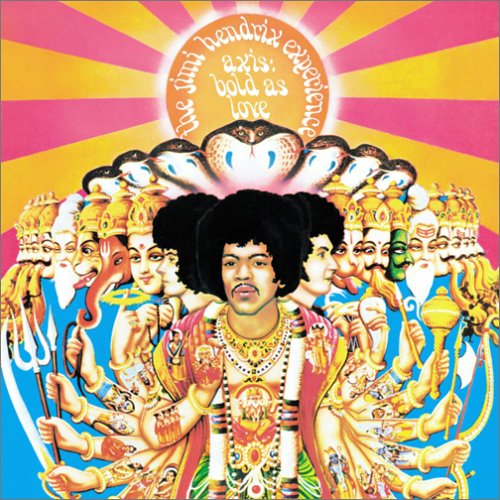

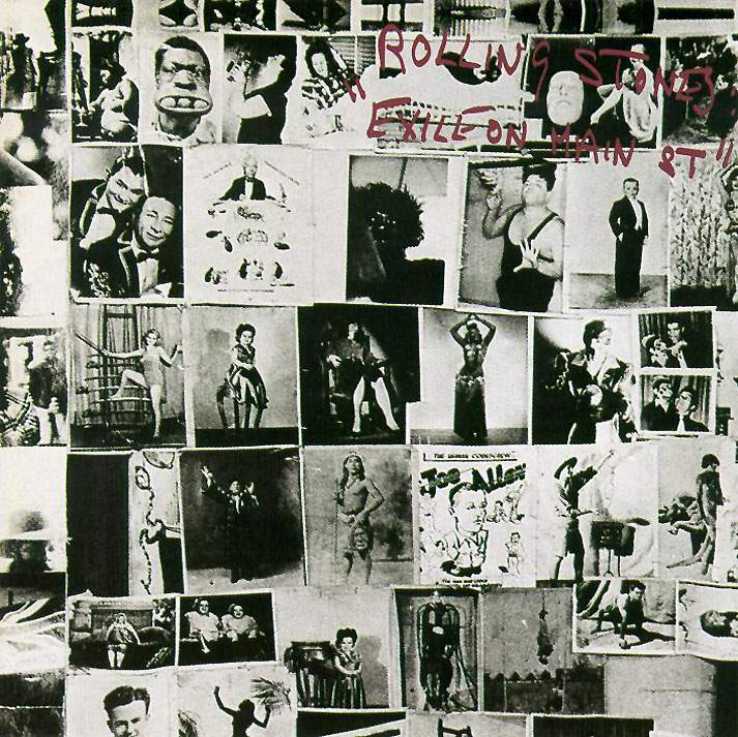

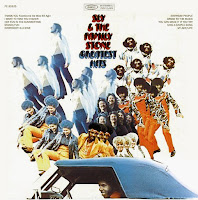





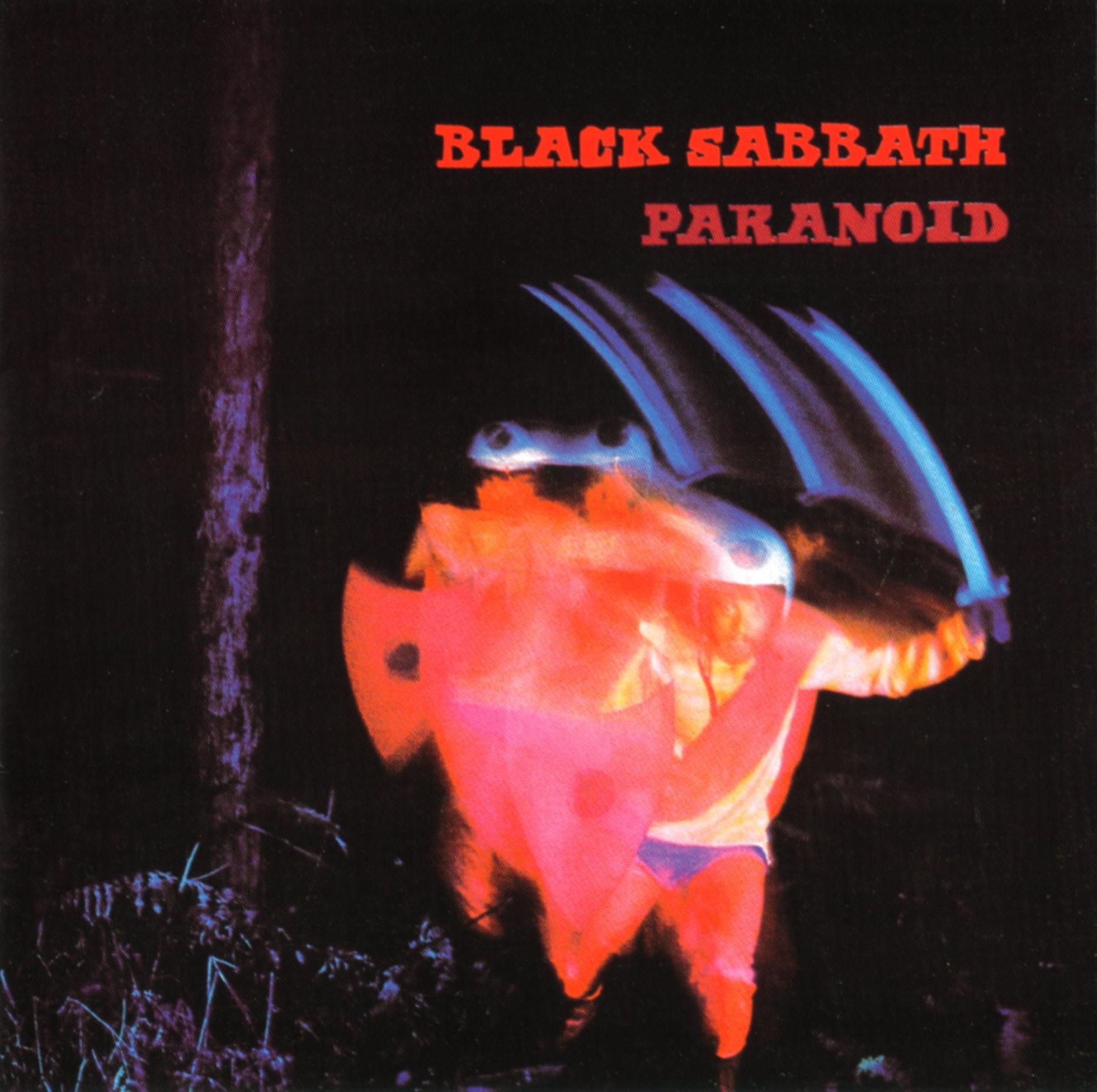
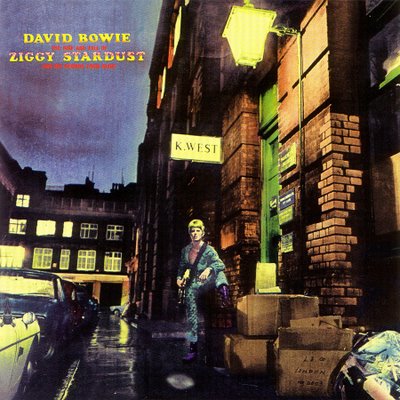
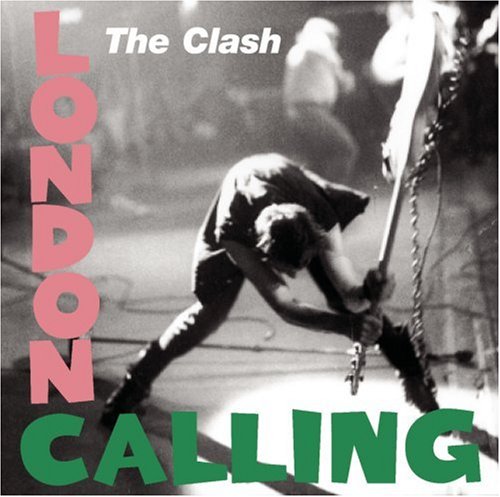





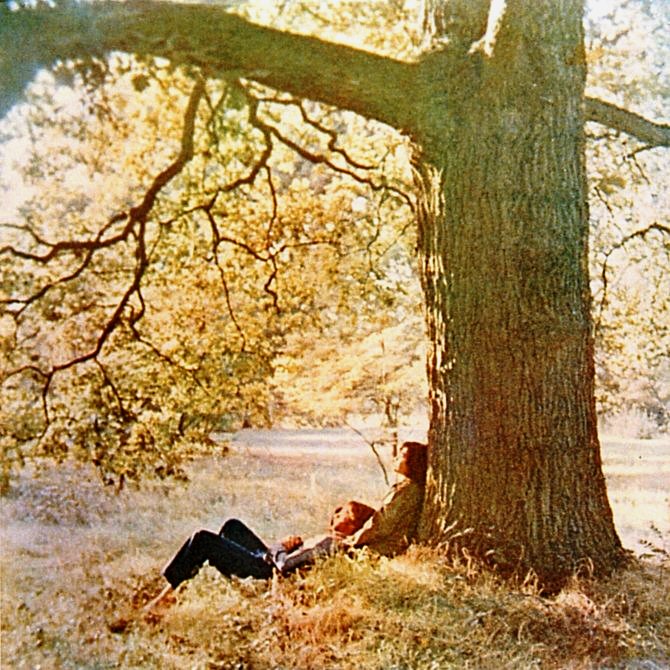
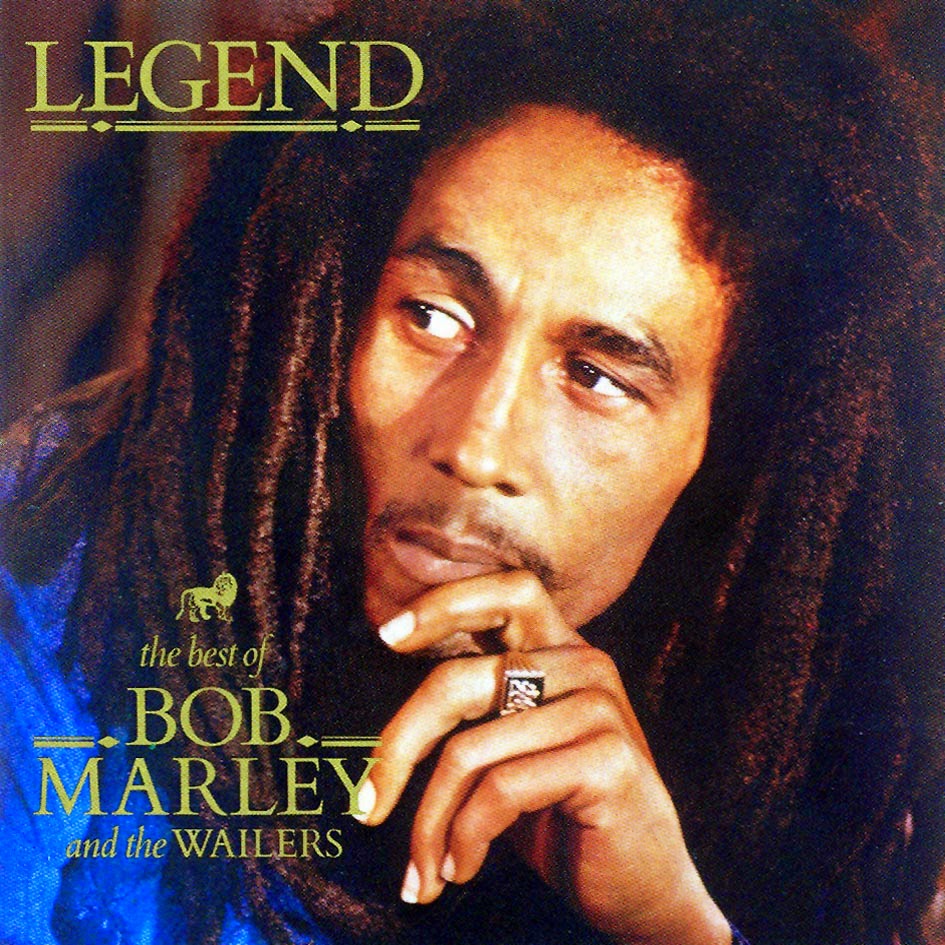
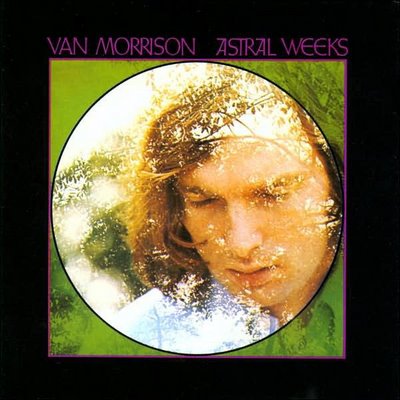
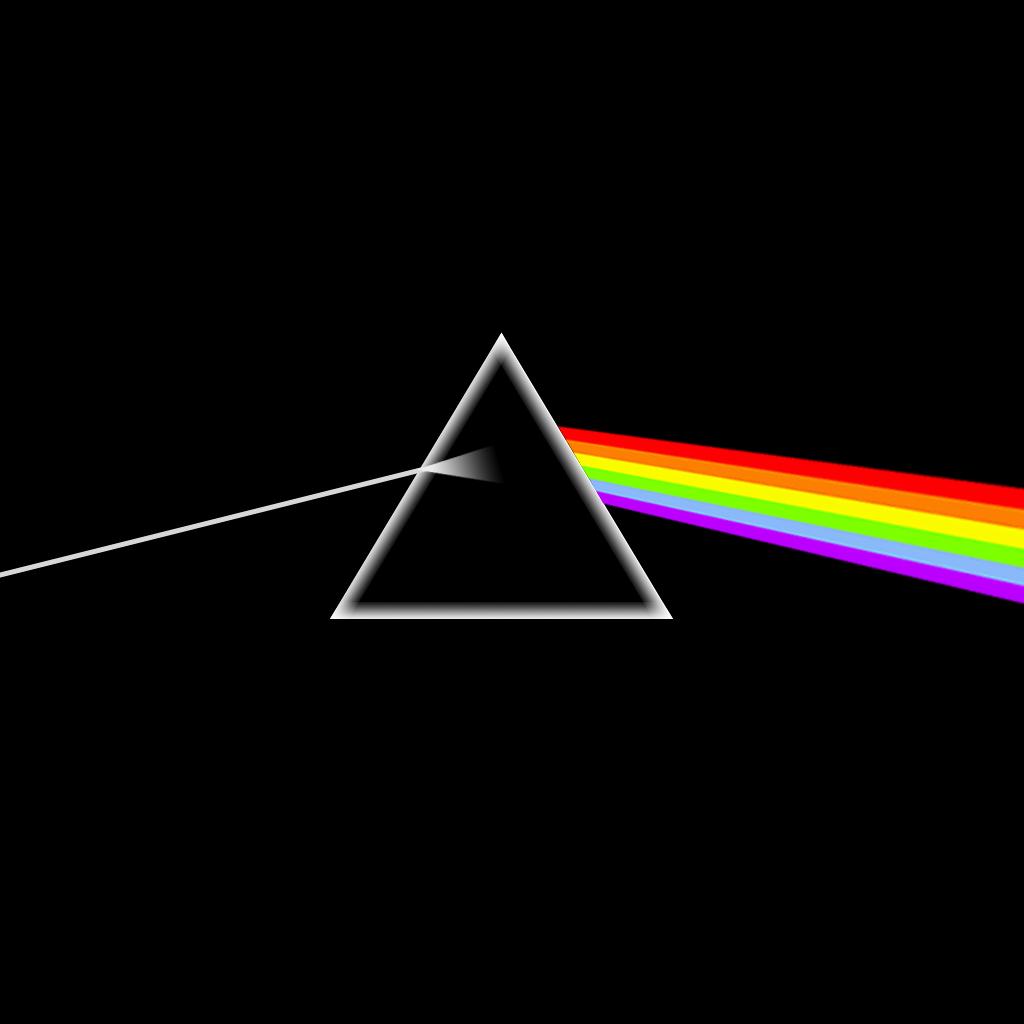
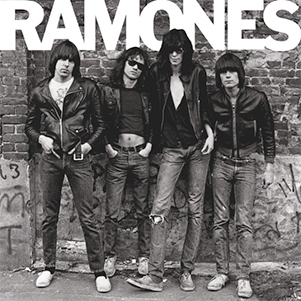







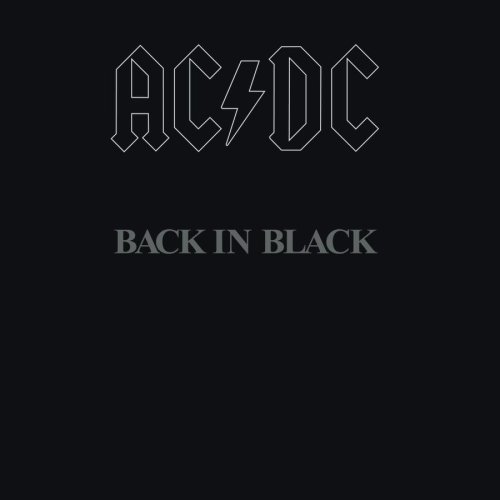

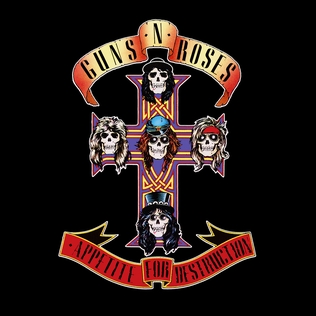



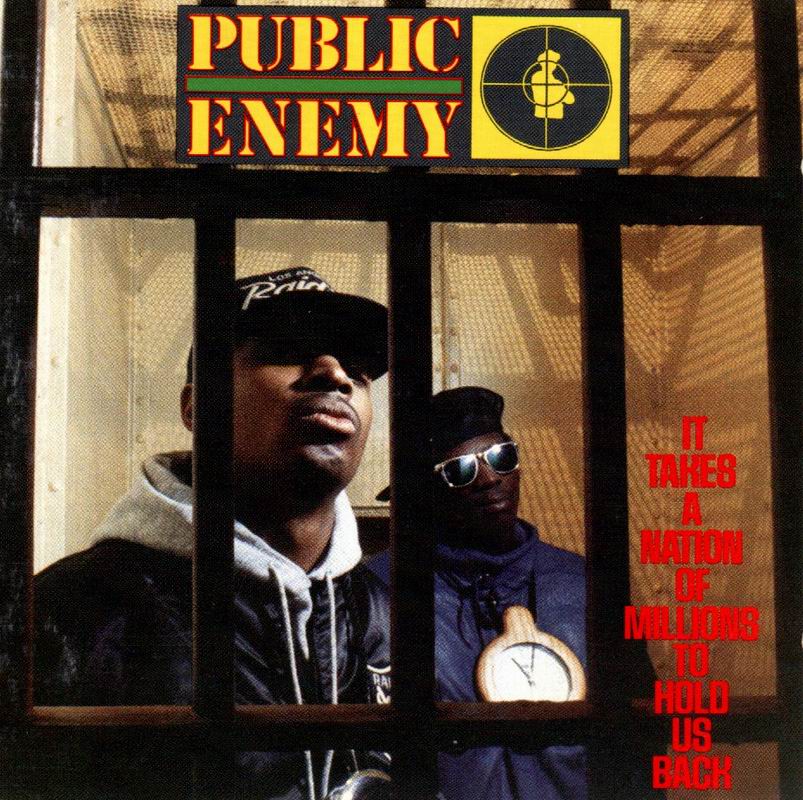
.jpg/220px-Raising_Hell_(Run_DMC_album_-_cover_art).jpg)




